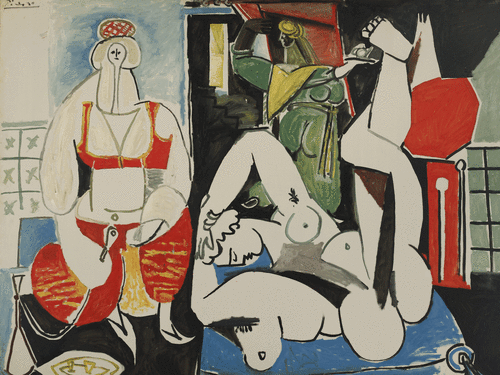
Pablo Picasso, Les Femmes d'Alger (version H), 24 janvier 1955 (Women of Algier (version H), 1955
Oil on canvas
130.2 x 162.3 cm. 51 1/4 x 63 7/8 in.
©Helly Nahmad Gallery NY
LONDON
ROYAL ACADEMY OF ARTS
Picasso and Paper
January 25 - August 8, 2020
The Nahmad Collection is pleased to participate to the exhibition, Picasso and Paper, taking place at the Royal Academy of Arts.
For Picasso, paper was both a tool to explore his ideas and a material with limitless possibilities. He experimented with everything from newsprint and napkins to decorative wallpaper. He spent decades investigating printmaking techniques, sourcing rare and antique paper from as far as Japan – and all without losing his compulsion to draw on every last scrap.
From effortlessly expressive drawings that led to towering sculptures to the colossal collage, Femmes à leur toilette, Picasso’s work with paper spans his entire lifetime and showcases his constant drive to invent and innovate.
You will see Picasso’s creative process first-hand in remarkable documentary footage of the artist at work, studies for Guernica, and sketchbooks where the seeds of revolutionary masterpieces first took shape, including Les Demoiselles d’Avignon.
Letters, illustrated poems and photographic collaborations with Dora Maar will also offer glimpses into the artist’s life.
Immerse yourself in Picasso’s world of paper and discover how – with this everyday material we know so well – he found the means to explore the furthest reaches of his creativity.